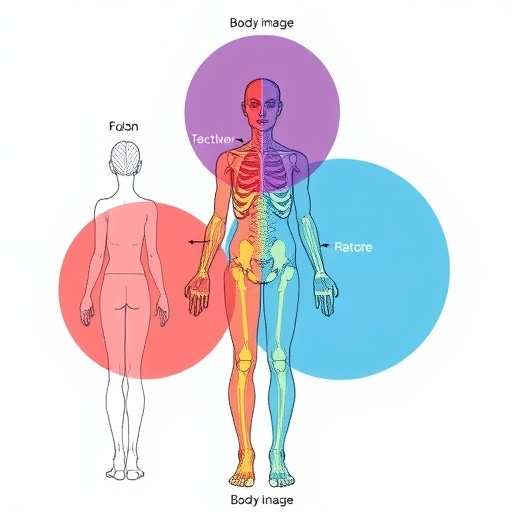In the realm of biochemistry and cellular biology, the understanding of the role of hydrogen peroxide (H₂O₂) as a signaling molecule and redox regulator is paramount. A groundbreaking advancement in this area has recently been unveiled with the introduction of HyPerFLEX, a state-of-the-art sensor specifically designed for high-precision monitoring of H₂O₂ in living cells. This innovative tool, part of the HyPer family of sensors, builds upon the existing knowledge of redox biology while offering unique enhancements that cater to the ongoing demands of modern cellular imaging.
HyPerFLEX integrates the redox-sensitive OxyR domain, derived from Neisseria meningitidis, with circularly permuted Y-FAST, which is a type of fluorogenic protein. This combination allows for a sophisticated mechanism of fluorescent detection that is notably independent of oxygen levels. Upon oxidation by H₂O₂, the OxyR domain undergoes structural changes that unleash a fluorescence response, which is fundamentally crucial for visualizing oxidative states in cells. This feature is particularly beneficial for researchers exploring the role of the oxidative metabolism in various physiological and pathological processes.
One of the standout characteristics of HyPerFLEX is its ability to facilitate imaging of H₂O₂ dynamics across different cellular compartments. This flexibility in design enables researchers to tune the emission spectra from green to far-red wavelengths, thus accommodating a variety of experimental setups and conditions. Such adaptability is particularly significant when conducting experiments under hypoxic (low-oxygen) conditions, where traditional sensors may falter. This novel attribute opens new avenues for investigating the role of reactive oxygen species in cellular signaling and disease mechanisms.
Moreover, HyPerFLEX exhibits an unprecedented capacity for detecting ultralow concentrations of H₂O₂, setting a new benchmark in the field. Researchers have noted its superiority over its predecessor, HyPer7, particularly when monitoring the early stages of glucose-stimulated insulin production—a crucial process in the regulation of blood sugar levels. By employing this advanced sensor, scientists can gain deeper insights into the intricacies of cellular responses to oxidative stress, enhancing our understanding of metabolic diseases and dysfunction.
The applicability of HyPerFLEX transcends the confines of traditional cell biology, venturing into specialized subcellular environments such as the endoplasmic reticulum (ER). The highly oxidizing nature of the ER has posed significant challenges for researchers attempting to quantify H₂O₂ levels within this organelle. However, with the deployment of HyPerFLEX, these barriers can be addressed, providing an invaluable tool for examining redox changes in this vital cellular compartment. This capability is crucial, given the ER’s central role in protein folding and signaling pathways.
A compelling aspect of HyPerFLEX lies not only in its technical advancements but also in the potential it unlocks for broader research areas. The implications for studying oxidative stress are profound, as the mismanagement of hydrogen peroxide levels has been implicated in numerous pathological conditions ranging from neurodegenerative diseases to metabolic disorders such as diabetes. By enabling high-resolution imaging of H₂O₂ levels in real-time, HyPerFLEX paves the way for discovering therapeutic targets and strategies that can mitigate the detrimental effects of oxidative damage.
In addition to its expertise in detecting H₂O₂, HyPerFLEX’s versatility as a fluorogenic sensor cannot be overstated. Its compatibility with a variety of imaging techniques simplifies its integration into existing research frameworks. Whether used with confocal microscopy, fluorescence resonance energy transfer (FRET), or other imaging modalities, HyPerFLEX emerges as a powerful ally for scientists committed to elucidating the complex signaling networks within cells. This broad compatibility further solidifies its position as an essential tool in the arsenal of cellular biology researchers.
As the scientific community continues to unravel the intricacies of redox biology, HyPerFLEX stands at the forefront of innovation, offering robust solutions to long-standing challenges in monitoring oxidative stress. Its unique design allows for comprehensive studies that were previously hindered by the limitations of existing technologies. This advancement underscores the continuous need for innovative tools that can address the evolving challenges faced by biomedical researchers.
The implications of HyPerFLEX extend beyond academic research. As the importance of understanding oxidative stress gains traction in clinical settings, the potential applications of this sensor in diagnostics and therapeutic interventions become increasingly relevant. The ability to accurately monitor H₂O₂ levels could inform treatment protocols for various diseases, aligning with the growing trend of personalized medicine. By providing insights into individual oxidative states, clinicians could tailor interventions to suit the specific needs of patients, fostering a more effective approach to health management.
In conclusion, HyPerFLEX represents a significant leap forward in the field of cellular imaging and redox biology. Its ability to provide real-time insights into H₂O₂ dynamics within living cells opens new frontiers for research and clinical applications alike. As scientists explore the depths of oxidative stress and its implications for health and disease, HyPerFLEX is poised to become a cornerstone in this endeavor, offering clarity and precision in the study of cellular signaling processes.
The introduction of HyPerFLEX marks a transformative moment in the quest to understand the nuances of hydrogen peroxide’s role in cellular functions. Researchers equipped with this powerful sensor can now embark on comprehensive investigations into the impact of oxidative stress on cellular health, metabolism, and beyond. Its innovative design, unparalleled sensitivity, and compatibility with various experimental conditions position HyPerFLEX as a sophisticated tool that could redefine how hydrogen peroxide is studied in the modern scientific landscape. As research continues and the story unfolds, HyPerFLEX promises to illuminate our understanding of cellular dynamics with unprecedented clarity.
The scientific community stands on the brink of a revolution in how H₂O₂ is utilized as a biomarker for oxidative stress and cellular signaling. With the advent of HyPerFLEX, researchers are now empowered to push the boundaries of what is known about reactive oxygen species. As this tool finds its place in laboratories worldwide, it is set to catalyze new findings, challenge old paradigms, and ultimately enhance our understanding of the delicate balance between oxidative stress and cellular homeostasis.
As we navigate through this exciting phase of discovery, the potential of HyPerFLEX remains boundless, sparking curiosity and driving innovation. Researchers now have a remarkable opportunity to delve deepee into the molecular underpinnings of oxidative stress, armed with a sensor that truly reflects the complexities of cellular biochemistry. The future of H₂O₂ research has never looked so promising, and the journey is just beginning.
Subject of Research: Monitoring of hydrogen peroxide (H₂O₂) in living cells using HyPerFLEX sensor.
Article Title: A color-tailored fluorogenic sensor for hydrogen peroxide.
Article References:
Potekhina, E.S., Bass, D.I., Ezeriņa, D. et al. A color-tailored fluorogenic sensor for hydrogen peroxide.
Nat Chem Biol (2025). https://doi.org/10.1038/s41589-025-02036-6
Image Credits: AI Generated
DOI: https://doi.org/10.1038/s41589-025-02036-6
Keywords: Hydrogen peroxide, HyPerFLEX, cellular imaging, oxidative stress, OxyR domain, fluorescence sensor, metabolic diseases, subcellular monitoring, redox biology, therapeutic implications.
Tags: advancements in biochemistry toolsdynamics of hydrogen peroxide in cellsfluorescence detection of H₂O₂fluorogenic sensor for hydrogen peroxidehigh-precision monitoring of signaling moleculesHyPerFLEX sensor technologyimaging oxidative states in cellsinnovative tools for cellular biology researchNeisseria meningitidis OxyR domainoxidative metabolism in living cellsredox biology and cellular imagingstructural changes in proteins





